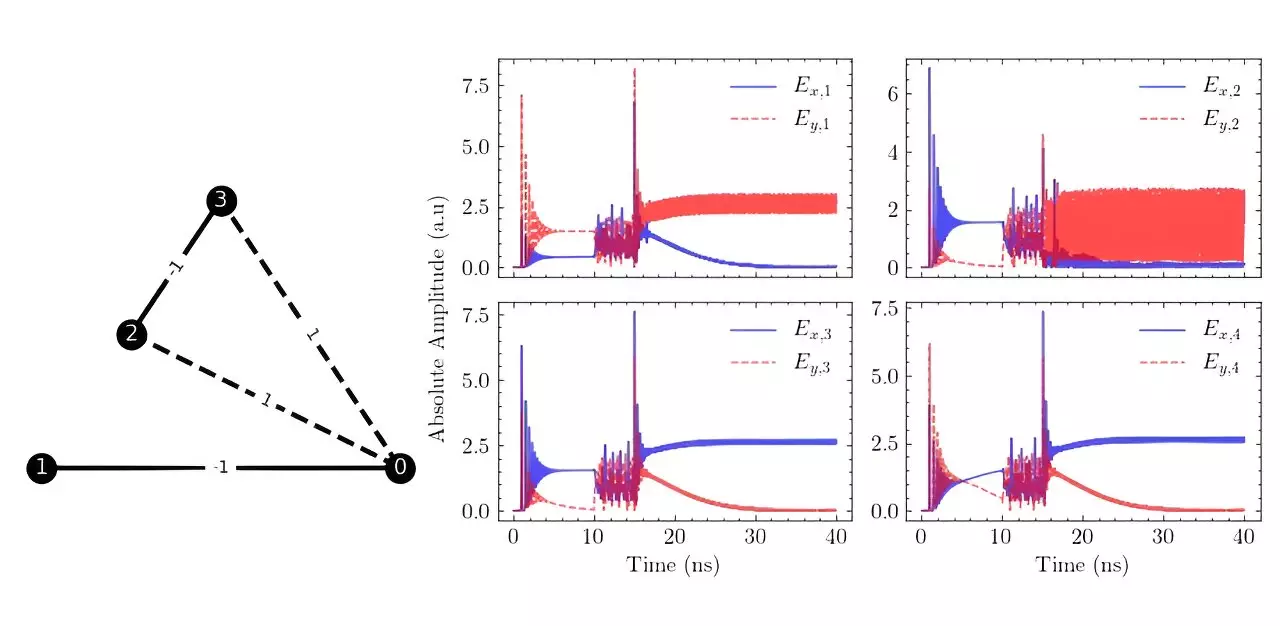In today’s fast-paced world, the ability to solve intricate problems efficiently is more critical than ever. Traditional computers often face challenges when dealing with a high volume of interconnected variables, leading to inefficiencies such as the von Neumann bottleneck. However, a new paradigm in problem-solving has emerged in the form of collective state computing, which aims to tackle these issues by mapping optimization problems onto the Ising problem in magnetism.
Picture a complex problem represented as a graph, where nodes are linked by edges. Each node can be in one of two states, either +1 or -1, symbolizing potential solutions to the problem at hand. The objective is to identify the configuration that minimizes the total energy of the system based on a principle known as the Hamiltonian. By exploring physical systems that could surpass conventional computers in solving the Ising Hamiltonian efficiently, researchers are opening up new possibilities.
Exploring Light-Based Techniques
One fascinating approach involves leveraging light-based techniques to tackle Ising problems. Information can be encoded into properties such as polarization state, phase, or amplitude, allowing these systems to swiftly pinpoint the correct solution. By harnessing phenomena like interference and optical feedback, these techniques hold immense promise in revolutionizing problem-solving methodologies.
A recent study published in the Journal of Optical Microsystems by researchers from the National University of Singapore and the Agency for Science, Technology, and Research delved into using vertical-cavity surface-emitting lasers (VCSELs) to address Ising problems. In this configuration, data is encoded in the linear polarization states of the VCSELs, with each state representing a potential solution. The interconnected nature of the lasers encapsulates the problem’s structure, allowing for efficient problem-solving capabilities.
Promising Results and Ongoing Challenges
The researchers tested their system on 2-, 3-, and 4-bit Ising problems, yielding encouraging outcomes. Nevertheless, they also encountered hurdles, such as the necessity for minimal VCSEL lasing anisotropy, which may pose challenges in practical implementation. Overcoming these obstacles could pave the way for the development of a cutting-edge all-optical VCSEL-based computer architecture capable of solving problems that are currently beyond the reach of traditional computers.
The fusion of Ising problems and light-based computing represents a groundbreaking avenue in the realm of problem-solving. By harnessing the power of collective state computing and innovative technologies, researchers are on the brink of unlocking solutions to intricate problems that have long remained elusive.


Leave a Reply